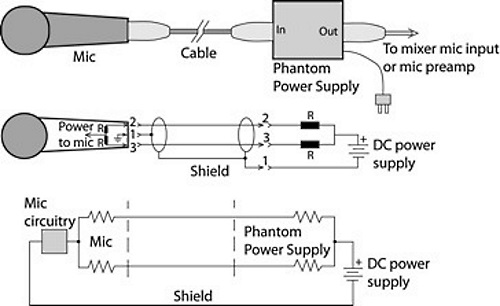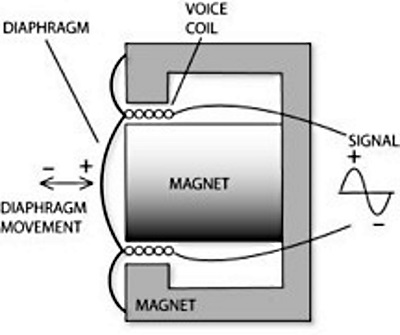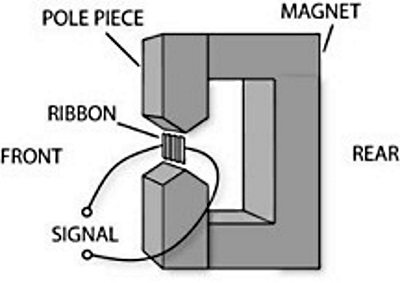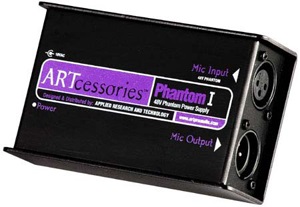
The output of the condenser mic capsule is extremely high impedance so it is very hum-sensitive. To bring that impedance down to a usable value, an impedance-converter circuit is connected to the capsule output.
This circuit is necessary whether the capsule is electret or non-electret. The converter needs a DC voltage to power it, and this voltage is supplied by the phantom power supply.
Sometimes other transistors are added to give the mic a balanced output, and these components work off phantom power too.
In contrast, a dynamic microphone needs no power because it has no active electronics. It generates its own electricity like a loudspeaker in reverse.

In a moving-coil dynamic microphone (Figure 3), a coil of wire is attached to a diaphragm. This voice coil is suspended in a magnetic field. When sound waves vibrate the diaphragm and its attached coil, the coil vibrates in the magnetic field and generates an electrical signal similar to the incoming sound wave. The voice coil leads are soldered to XLR pins 2 and 3 inside the microphone.
In a ribbon microphone (Figure 4), the diaphragm is a thin metal foil or ribbon.
Sound waves vibrate the ribbon in a magnetic field and generate corresponding electrical signals. The ribbon leads are soldered to XLR pins 2 and 3 inside the microphone.
You can plug a dynamic or ribbon microphone into a phantom supply without damaging the mic. That’s because the voice-coil or ribbon leads are not connected to pin 1, so no current from the phantom supply can flow through them.

However, if there’s any imbalance in the phantom voltage applied to pins 2 and 3, a current will flow through the microphone voice coil or ribbon (which is connected to pins 2 and 3).
Or if one terminal of the coil or ribbon is accidentally shorted to the grounded mic housing, a current will flow through the coil or ribbon. For this reason, it’s best to switch off phantom power for dynamic and ribbon mics.
Using A Stand-Alone Supply
You can buy a phantom power supply (Figure 5) from your microphone dealer or online. Some supplies are AC powered; some are battery powered; some are both. Some can power a single microphone; others can power several at once.

In any case, you plug the supply in series with the mic cable. The supply has XLR-type input and output connectors, one pair per channel.
Connect a mic cable between your microphone and the supply’s input connector. Plug another mic cable between the supply’s output connector and your mixer mic input.
If you need to convert a low-Z condenser mic to high-Z unbalanced using a transformer/adapter, run the mic through a stand-alone phantom supply before converting it to high-Z unbalanced.
